REVEALED: Over a Third of Brits Admit to Ruining their Clothes in the Wash
A new study has revealed that many Brits are taking risks with their garments, with just over 1 in 5 checking laundry care symbols when washing a piece of clothing for the first time.
The survey, of over 1,000 British people, commissioned by Beko UK, a leading manufacturer of washing machines and other home appliances, sought to discover how much attention Brits give to laundry care symbols and their understanding of these important instructions.
The findings suggest that people either feel overly confident about their laundry skills or are simply too rushed to properly examine the care labels on their clothing before loading their washing machines. This casual approach of some Brits towards clothing care appears to be taking its toll, with over a third admitting to ruining a piece of clothing in the wash.
Taking the time to read and understand laundry care symbols before hitting the 'start' button is essential
to avoid ruining your clothing and causing unnecessary disappointment and expense,
explains Salah Sun, Head
of Product Management at Beko UK.
It's worth developing the habit of setting aside garments that haven't been through the wash before, so
you remember to read the care symbols on the labels and research any that you’re unsure about. Whilst it can
feel tedious, it's a worthwhile habit to develop.
The Clothing Care Symbol Brits Know Best: Handwash Only
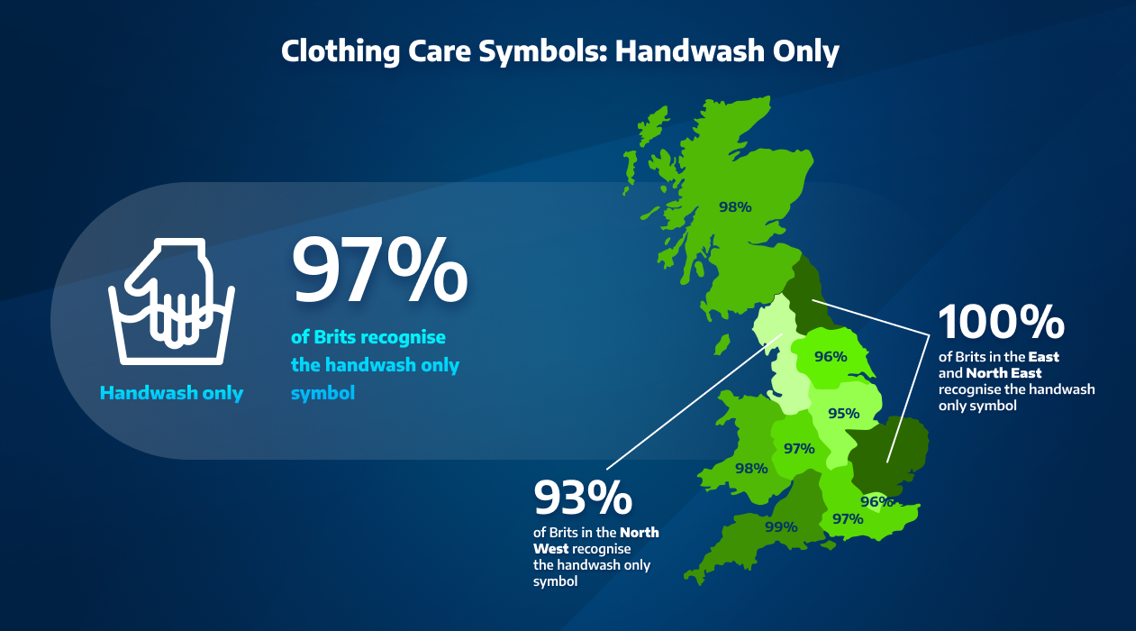
When it comes to symbol recognition, most Brits understand the 'handwash only' instruction, with an impressive 97% of survey respondents correctly identifying it. With this symbol featuring a distinctive hand illustration it’s perhaps less surprising that this one proved to be the easiest to decipher amongst clothing care symbols.
However, the survey results reveal interesting regional variations. Brits in the Northwest trailed behind other regions in their ability to recognise this symbol, with close to one in ten failing to identify it correctly, mostly mistaking the instruction for 'do not wash'. This misunderstanding could prove costly, particularly for delicate clothing that requires gentle washing care.
Hand-knitted items, beaded or sequined garments and pieces with ties or lace embellishments are
often best suited for handwashing,
notes Salah Sun.
Handwashing avoids the hot water temperatures and high spin cycles of washing machines, helping to
prevent shrinking and damage to delicate fabrics or special details. However, because there’s no
spin cycle involved, clothes will retain more water, so be prepared for them to feel wetter and take
longer to dry.
The Most Misunderstood Care Label Symbol: Do Not Bleach
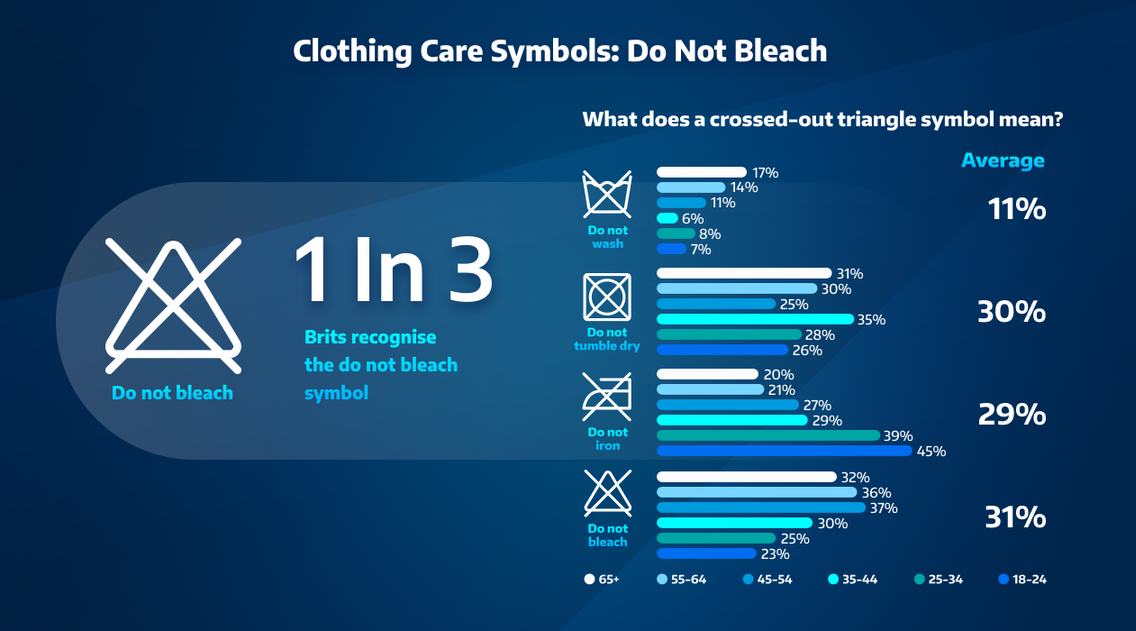
At the opposite end of the spectrum is the 'do not bleach' symbol, with only a third of survey respondents identifying it correctly. This uncovers a knowledge gap that could have serious consequences for clothing care in many British households.
The majority of Brits who misunderstood this washing instruction wrongly believe the symbol means 'do not iron' or 'do not tumble dry'. The confusion appears most pronounced amongst younger demographics, with just over a fifth of Brits aged 18-24 demonstrating an understanding of this clothing care symbol.
Regionally, Brits living in the East Midlands appeared to be the most knowledgeable in this area, with almost 4 in 10 respondents correctly identifying the 'do not bleach' instruction. This highlights the need for better awareness of laundry care symbols across the country.
Misunderstanding the 'do not bleach' symbol could have disastrous results for British households,
warns Salah Sun. Bleaching clothing when care instructions advise against it can damage clothing
fibres, especially in certain fabrics or dyes, potentially causing them to become weakened, faded,
or discoloured.
Some Brits Struggle to Make Sense of Ironing Instructions
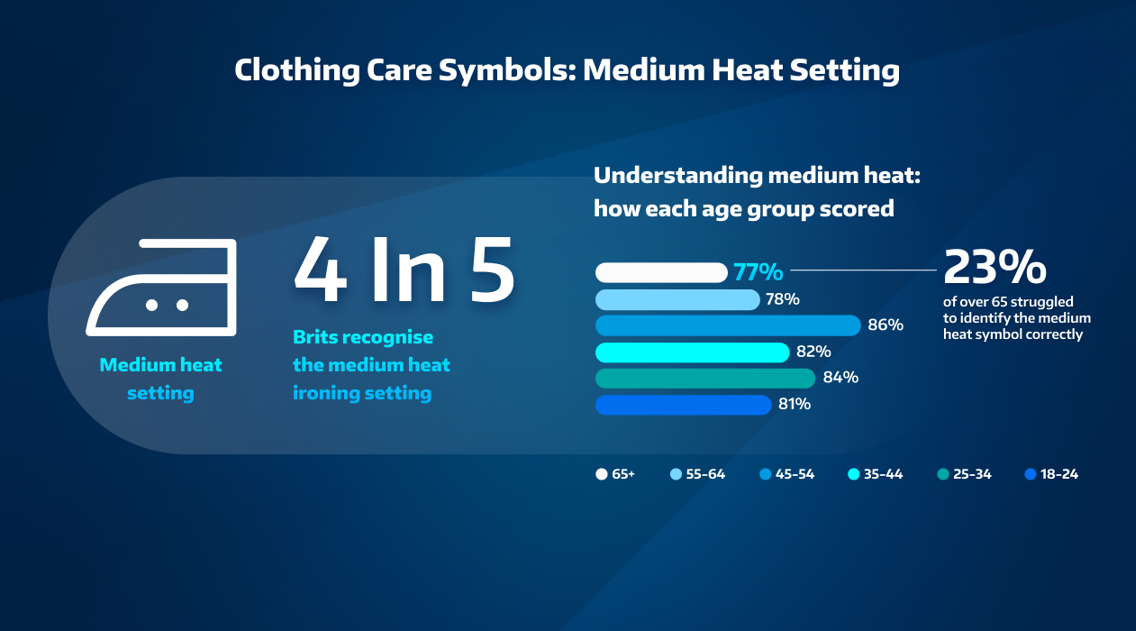
Most Brits demonstrate a good level of understanding when it comes to interpreting ironing symbols, with just over four fifths of survey respondents successfully identifying that an iron symbol with two dots indicates a medium heat setting is required.
However, some age groups and certain parts of the country have a better understanding of this care label symbol than others. Interestingly, Brits over 65 showed less understanding of this symbol compared to younger respondents, with almost a quarter of this age group struggling to make sense of it.
Also, those living in Wales found identifying the 'iron with two dots' instruction the most challenging, with a third of respondents in this part of the country showing a lack of understanding of it.
Having an understanding of the ironing care symbols is essential because using inappropriate
temperatures on delicate items can cause irreversible damage,
explains Salah Sun.
Ironing at temperatures that are too hot can cause scorching, fading or permanent deformation and
unfortunately, there's no coming back from this type of damage.
Almost 4 in 5 Brits Lack Care When It Comes to First-Time Washing
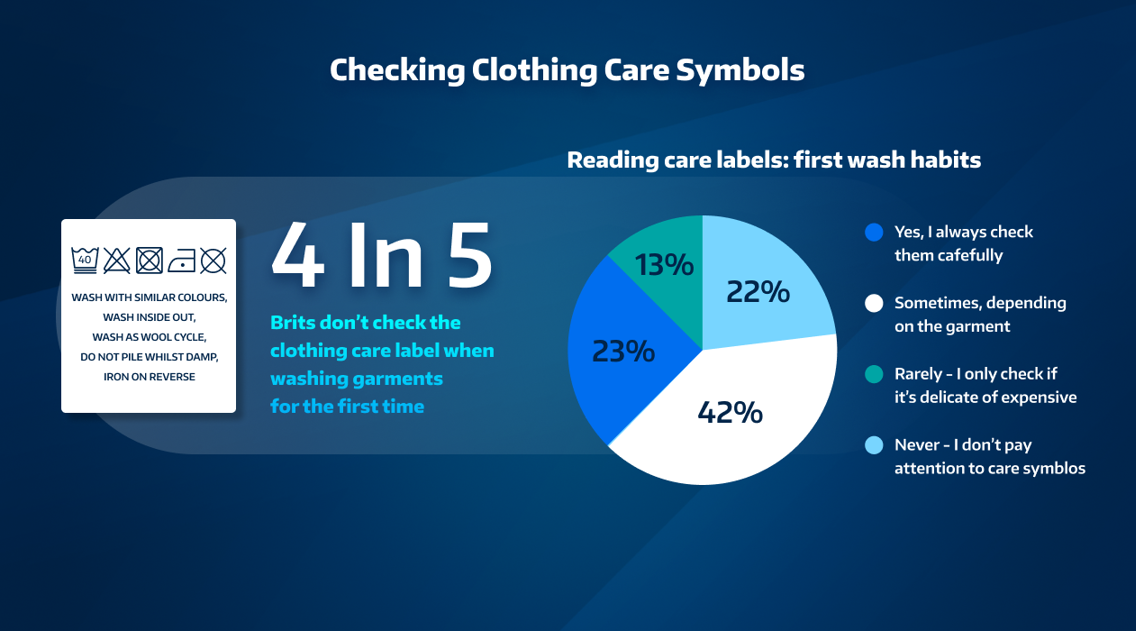
The survey revealed that almost 4 in 5 Brits are guilty of not checking the clothing care symbols when washing clothing items for the first time. Whether dealing with brand-new purchases or second-hand finds, many Brits are risking the longevity and quality of their clothing by ignoring the instructions on their clothing labels.
Key findings surrounding Brit’s approach to washing garments for the first time:
- Just over a fifth of Brits only check care labels on delicate or expensive clothing
- Almost a third of those aged 65+ say they always read care labels on garments
- One in five Brits living in the Northwest admit to never paying attention to care symbols
Reading a clothing care label takes less than a minute so everyone has time to do this whilst
separating washing and loading their machine. By not creating this routine with new additions to
your wardrobe, you could be shortening their lifespan,
advises Salah Sun.
More than 1 in 3 Brits Have Ruined Clothing Through Carelessness Towards Washing Instructions
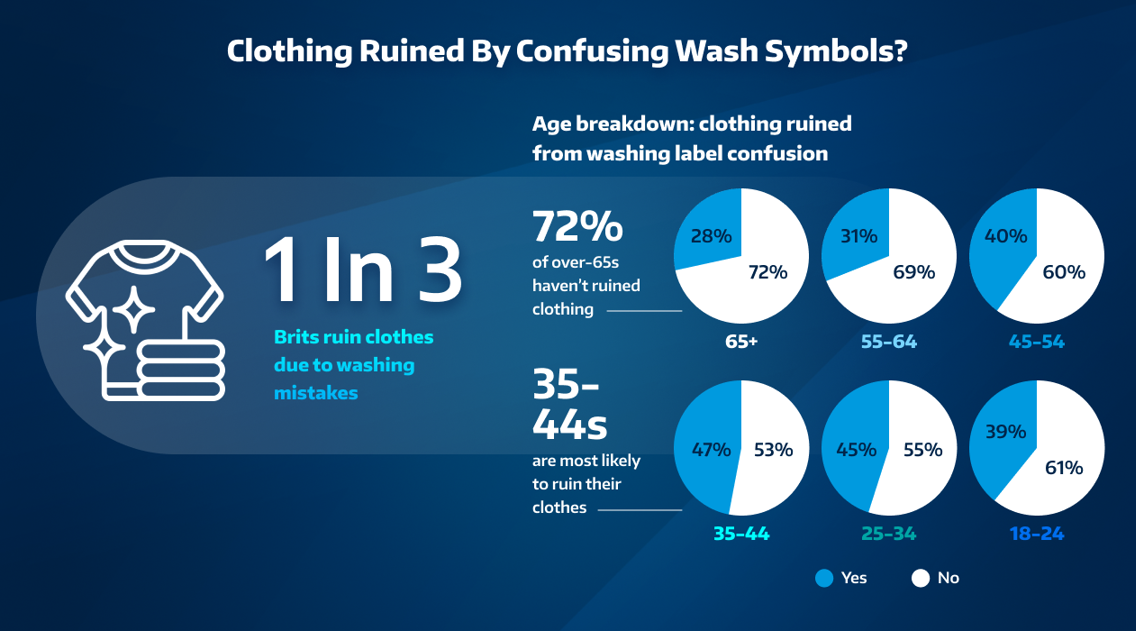
Perhaps the most concerning finding is that over a third of Brits have admitted to ruining clothing due to misunderstanding the washing instructions, with almost one fifth experiencing disasters on multiple occasions.
The survey reveals just who, around the country, is spoiling their clothing items the most:
- Brits aged 35-44 are most guilty of ruining their clothing
- Almost three quarters of those aged 65+ haven't spoilt any clothing, though over half of this age group put this down to luck rather than knowledge
- The East of England sees more clothing disasters than anywhere else in the country
- Those living in Wales had the fewest issues with ruined garments
These findings reveal an opportunity for Brits to extend the life of their clothing, as many are
unknowingly putting garments at risk of damage due to overlooked care instructions. ,
says Salah
Sun.
Care labels exist to help maintain clothing quality and lifespan, providing essential instructions
on washing, drying, ironing, and bleaching to prevent damage, shrinking, or fading. When it comes to
washing and caring for clothes, you need to take your time and not take risks or leave it down to
luck.
We Need to Make Our Clothes Last
By understanding laundry care symbols and following specific care instructions for different fabrics and embellishments you can help your clothes stay in better condition for longer, providing greater enjoyment and value for money.
Salah Sun adds, By taking the time to understand and follow care symbols, Brits can protect their
clothing investments and support more sustainable consumption by helping garments last longer.
With clothing costs on the rise and household budgets under pressure, taking a moment to
understand care symbols can lead to meaningful savings by helping clothes last longer.
The survey was conducted using Find Out Now and included interviews with 1,453 respondents. From this group, a nationally representative sample of 1,003 respondents was selected.



